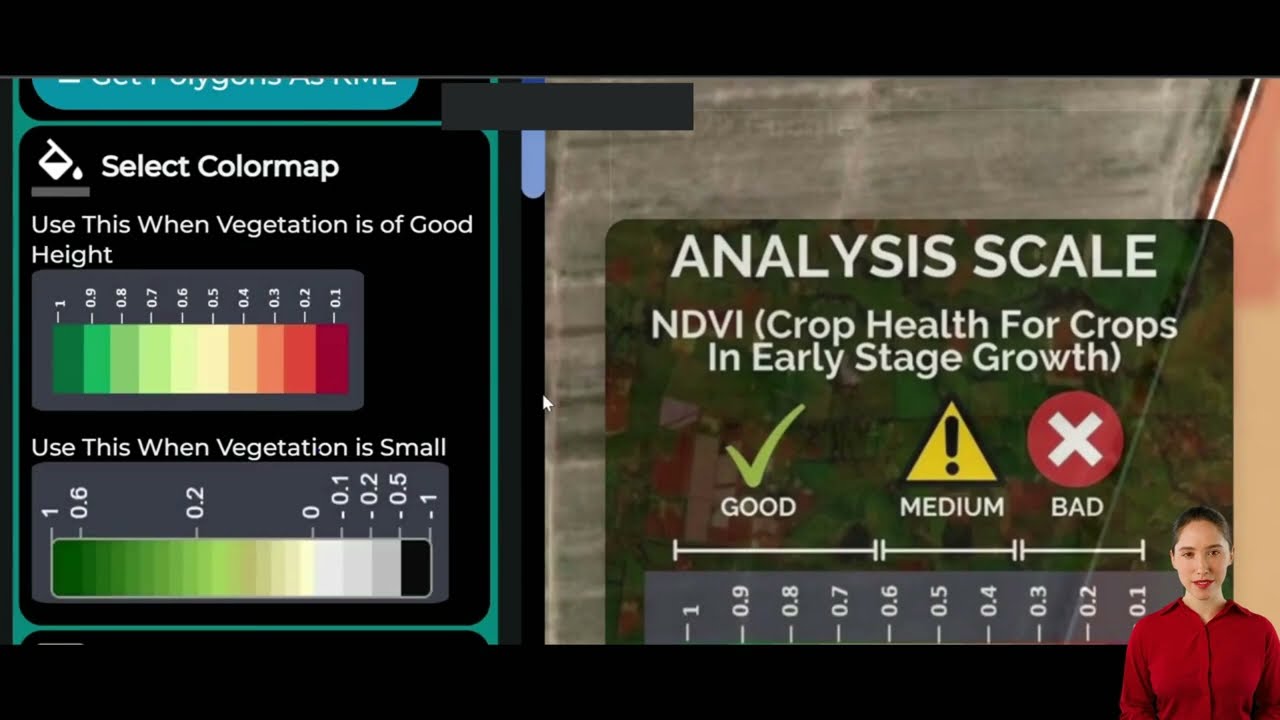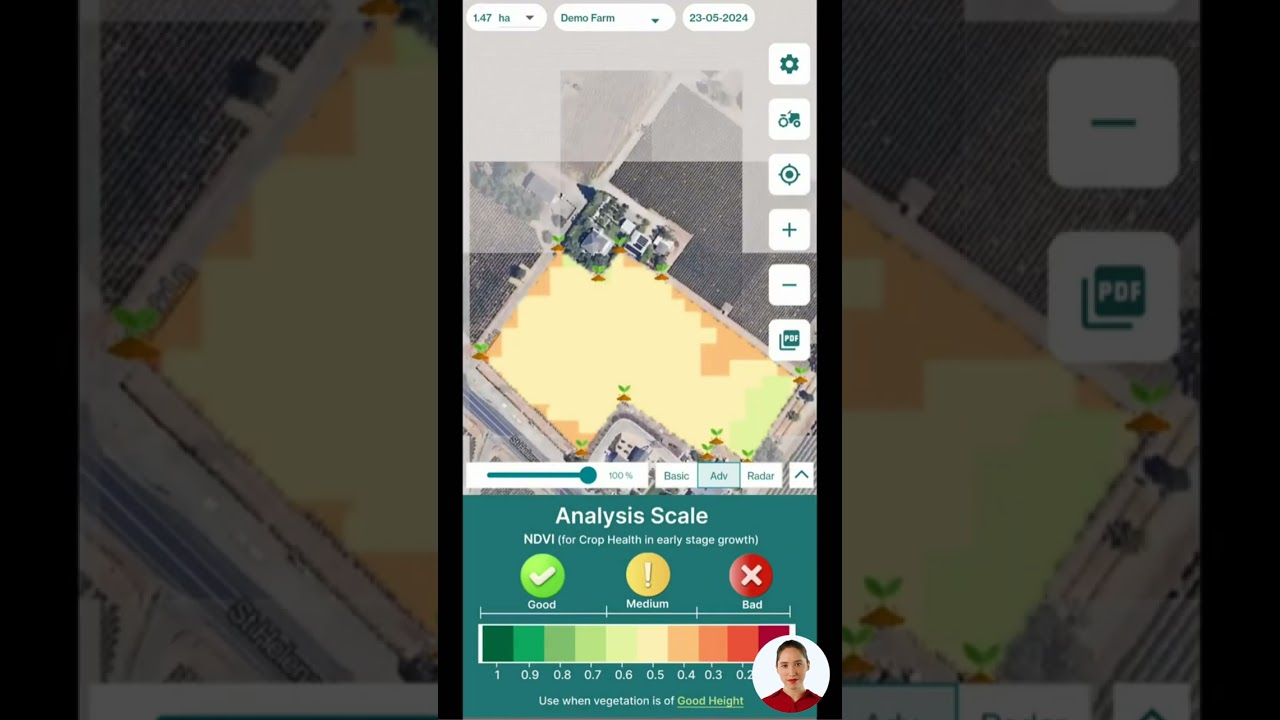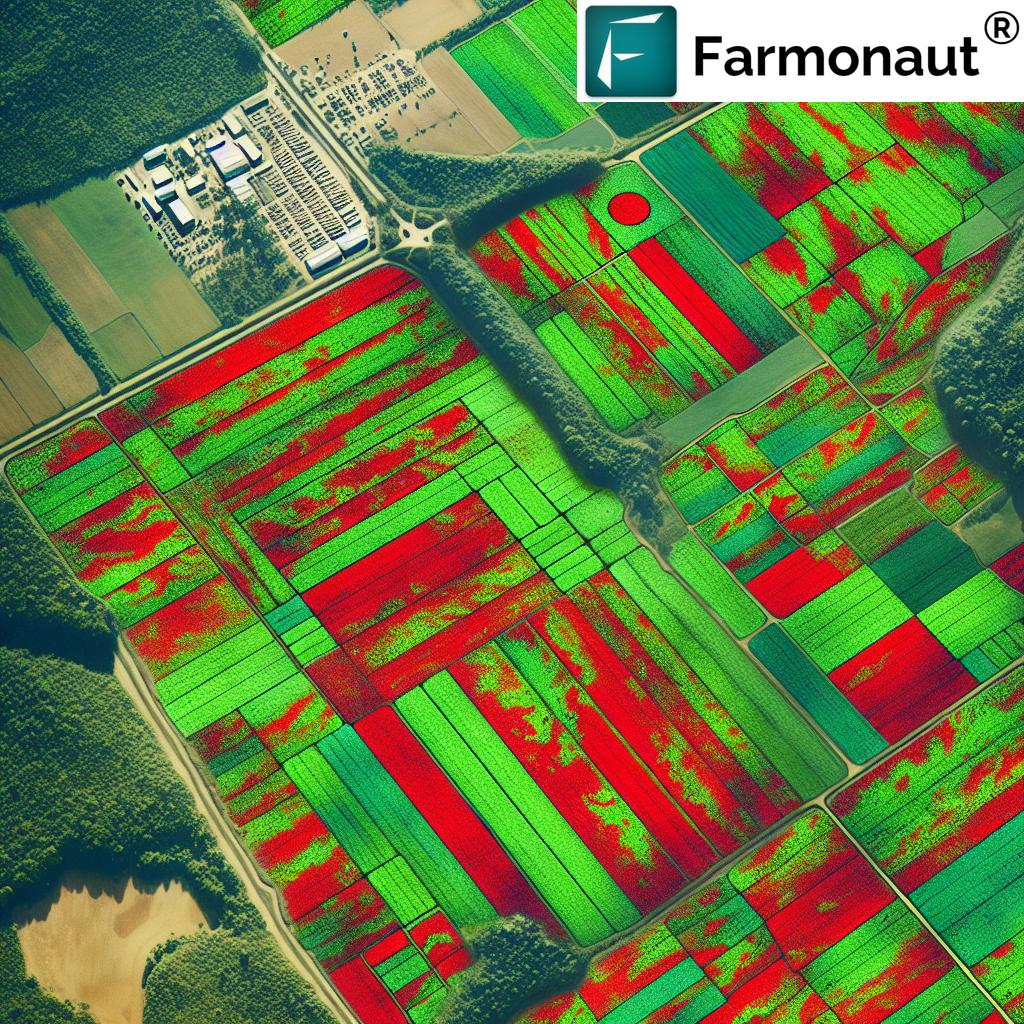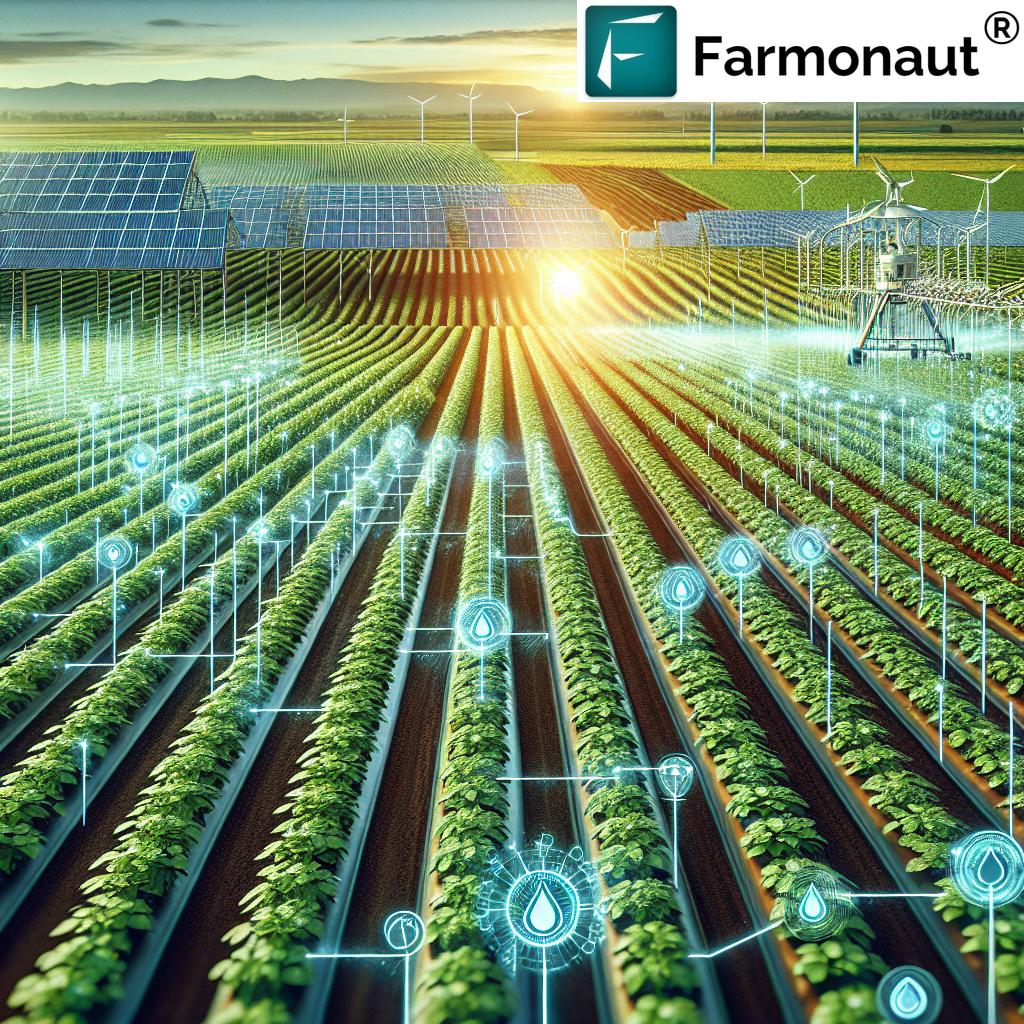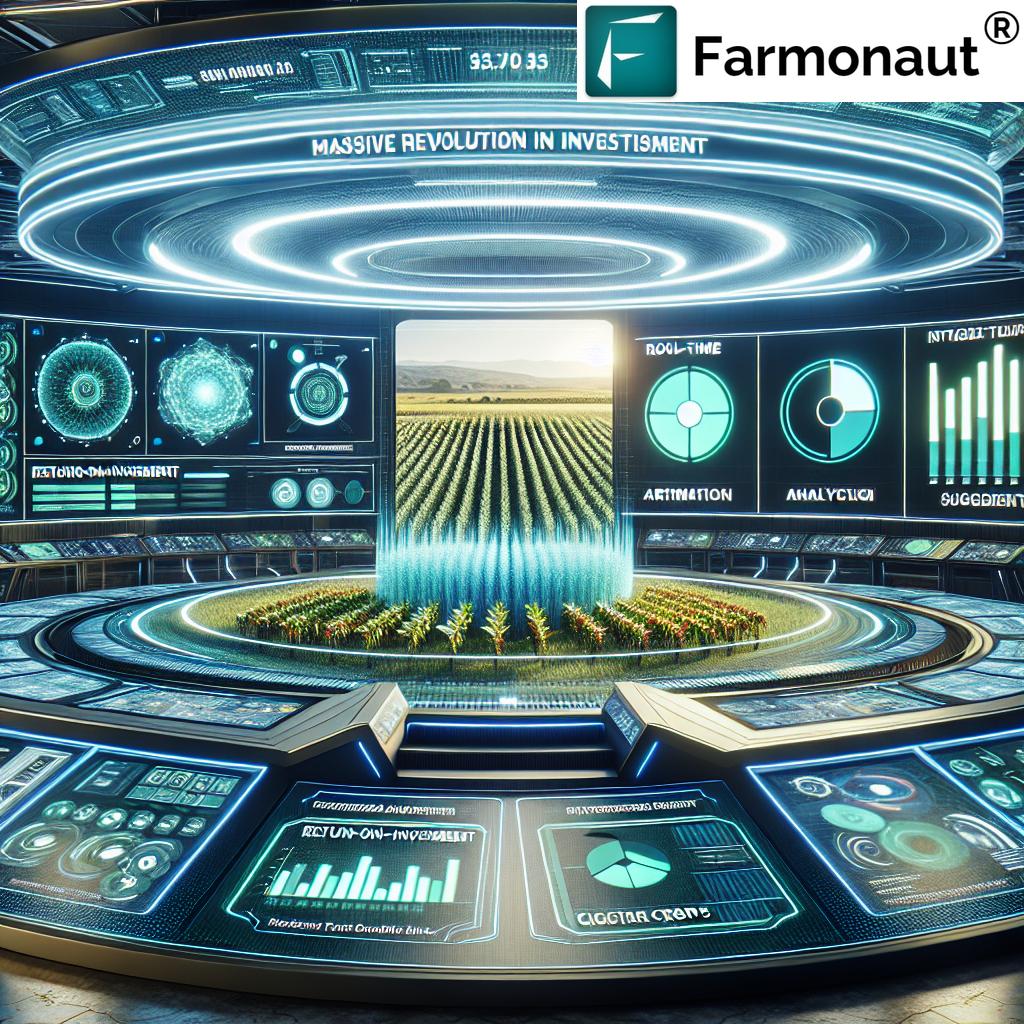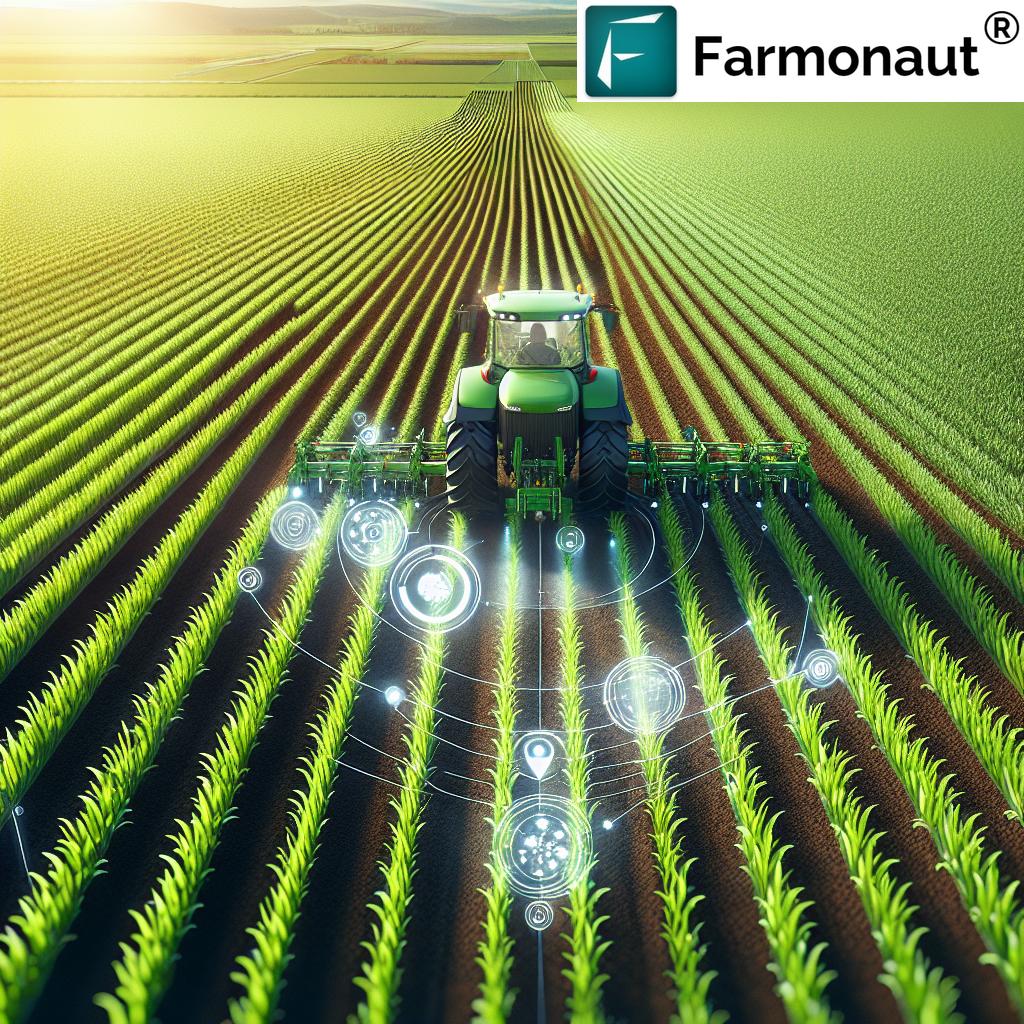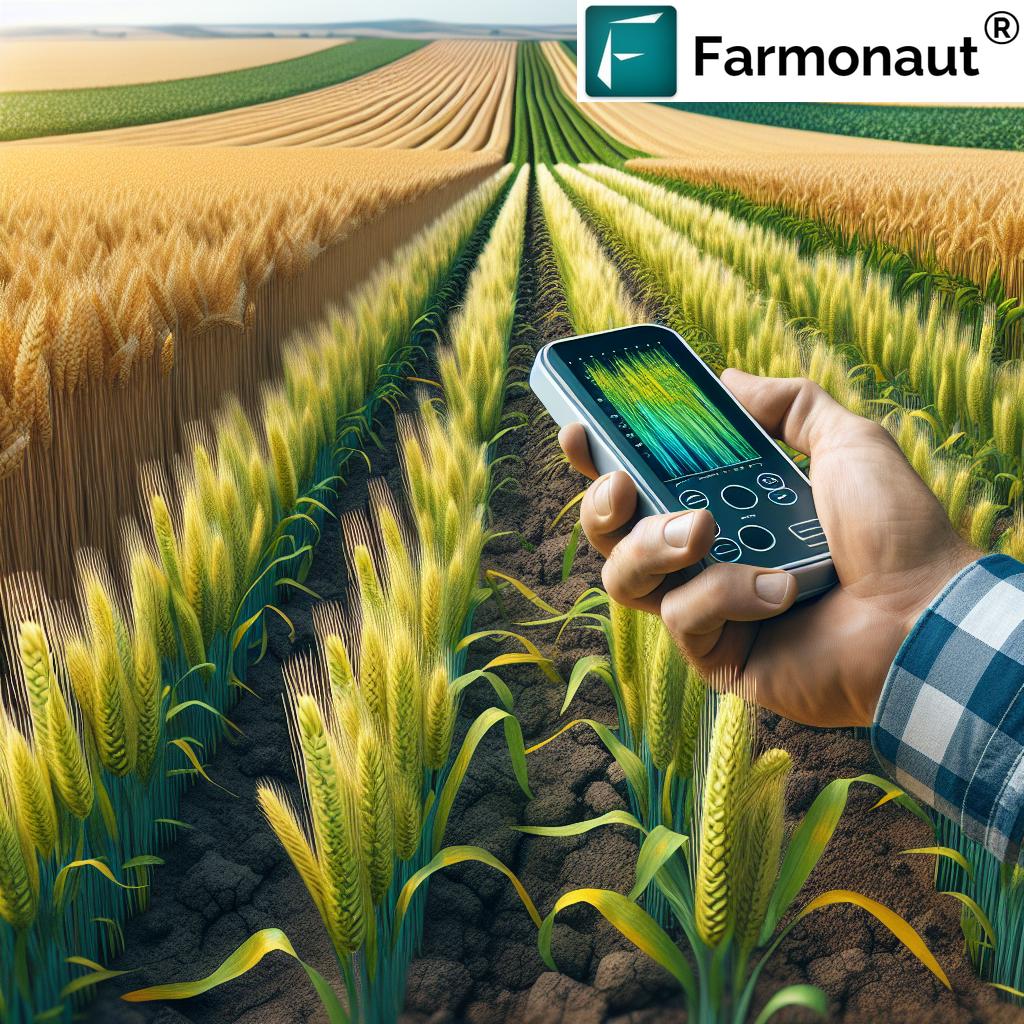NDVI Crop Monitoring: 7 Powerful Ways to Boost Yields Fast
“NDVI technology can detect crop stress up to 10 days before visible symptoms appear, enabling faster intervention.”
Table of Contents
- Introduction
- Understanding NDVI in Agriculture
- 7 Powerful Ways NDVI Crop Monitoring Boosts Yields
- 1. Crop Health Assessment
- 2. Irrigation Management
- 3. Targeted Fertilizer Application
- 4. Yield Prediction Using NDVI
- 5. Disease and Pest Detection in Crops
- 6. Weed Management
- 7. Large-scale Farm & Resource Optimization
- NDVI Technology Integration: Drones, Satellites & AI
- NDVI Applications: Comparative Impact Table
- How Farmonaut Empowers Sustainable Farm Management
- Challenges & Considerations for NDVI in Agriculture
- FAQs about NDVI Crop Monitoring
- Conclusion: Unlocking Agriculture’s Future with NDVI
Introduction
In the rapidly evolving world of agriculture, NDVI crop monitoring stands as a beacon of innovation, enabling farmers and agronomists to revolutionize their approach to crop management. The Normalized Difference Vegetation Index (NDVI) is a powerful remote sensing tool that delivers invaluable insights into crop health, resource optimization, and sustainable farming practices. By precisely analyzing the difference in red and NIR (near-infrared) light reflected by vegetation, NDVI allows us to monitor plant vigor, detect stress and deficiencies, and even predict yields.
In this comprehensive guide, we’ll explore 7 powerful ways NDVI crop monitoring can boost yields fast, explain how precision agriculture technology and remote sensing for crops are shaping the future, and illustrate how companies like Farmonaut are democratizing access to these groundbreaking solutions.
Understanding NDVI in Agriculture: The Science Behind the Vegetation Index
The Normalized Difference Vegetation Index (NDVI) is a widely used remote sensing index in agriculture for quantitative measurement of plant health, vigor, and biomass. NDVI helps us assess how healthy crops are by quantifying the difference between the near-infrared (NIR) light reflected (which healthy plants reflect a lot of) and red light absorbed (essential for photosynthesis).
NDVI Calculation Formula
NDVI = (NIR – RED) / (NIR + RED)
Where:
- NIR: Near-infrared light reflected by vegetation
- RED: Red light reflected by vegetation
Healthy vegetation absorbs most red light for photosynthesis and reflects high amounts of NIR light. This means healthy crops show NDVI values close to 1. However, stressed, sparse, or diseased crops reflect less NIR and more red light, resulting in lower NDVI values. With this vegetation index for farmers, we can monitor and assess plant health across large areas efficiently.
Why is NDVI So Widely Used in Agriculture?
- It’s non-invasive: No need to cut or disturb plants
- Remote Data Collection: Covers vast farm regions via satellite or drone imagery
- Timely Insights: Enables early stress detection, precise interventions, and optimized management
For modern farmers and agronomists, NDVI is the backbone of precision agriculture technology, helping optimize yields and resource use.
“Precision agriculture using NDVI can increase crop yields by up to 20% through targeted resource optimization.”
7 Powerful Ways NDVI Crop Monitoring Boosts Yields
Let’s dive into the most impactful applications of NDVI in agriculture and how each unlocks actionable value for farmers focused on boosting yields, cutting resource costs, and achieving sustainable farm management.
1. Crop Health Assessment
Crop health monitoring is the most direct and valuable use of NDVI. By analyzing NDVI imagery across large farm areas, it’s possible to identify regions showing low NDVI values—a direct indication of stressed, diseased, or nutrient-deficient vegetation.
- Early detection of issues such as nutrient deficiencies, pest infestations, and diseases
- Pinpointing problem areas allows for timely and targeted interventions
- Reduces crop losses and helps sustain overall productivity
Consistent NDVI-based crop health assessment helps farmers plan fertilizer, pesticide, and water applications precisely, reducing waste and costs.
2. Smarter Irrigation Management
Water stress is a top concern in global agriculture. NDVI data enables farmers to assess the water status of crops and adjust irrigation schedules accordingly:
- NDVI values across fields reveal where crops are well hydrated and where they show signs of water deficit
- Enables precision irrigation—applying water only to regions in true need
- Reduces wastage and ensures crops receive just the right amount of water
- Helps ensure consistent yields even under challenging environmental conditions
For large-scale operations or drought-prone areas, remote sensing for crops using NDVI is a lifeline for resource optimization and sustainability.
3. Targeted Fertilizer Application
Efficient fertilizer use is critical for sustainable, profitable farming. NDVI crop monitoring enables targeted application by:
- Identifying areas with low NDVI values indicating nutrient deficiencies
- Guiding precise fertilizer distribution (see how with Farmonaut’s real-time crop monitoring app)
- Reducing fertilizer usage and costs, minimizing environmental impact and runoff
- Ensuring that all crops receive adequate nutrition for optimal growth
Targeted fertilizer application with NDVI maximizes yield while protecting the ecosystem—a win-win for the agricultural landscape.
4. Accurate Yield Prediction Using NDVI
Yield prediction using NDVI analyzes the evolution of NDVI trends throughout the growing season to forecast potential harvest outcomes:
- Helps farmers and managers plan harvesting dates, storage, and marketing strategies
- Supports better resource allocation across the entire farm operation
- Reduces food waste by aligning supply with actual projected yields
- Improves financial planning and risk management, especially when combined with data-driven tools like Farmonaut’s Crop Loan & Insurance Verification
With NDVI-based yield assessment, farmers gain a crucial edge in maximizing profits and minimizing losses.
5. Disease and Pest Detection in Crops
NDVI technology plays a pivotal role in early disease and pest detection in crops, saving both yield and resources:
- Declining NDVI values in certain farm zones often indicate hidden pest infestations or disease outbreaks
- Allows for timely, targeted interventions (localized pesticide or biological treatment application)
- Significantly reduces the need for blanket pesticide spraying, lowering costs and environmental impact
Early detection through NDVI crop monitoring means smaller outbreaks, reduced crop losses, and safer, more sustainable agricultural practices.
6. Precision Weed Management
Weed infestations can be tough to spot before they hurt yields significantly. NDVI imagery can distinguish between crops and weeds due to their different spectral characteristics:
- Quickly identifies regions with abnormal NDVI signals characteristic of weed populations
- Enables precision, localized herbicide application only where needed
- Reduces herbicide costs and lowers environmental contamination
- Supports integrated weed management strategies for long-term control
NDVI-based weed detection technologies are vital for maintaining maximum crop health, yields, and profits.
7. Large-Scale Farm & Resource Optimization
Modern farmers manage fields of all sizes, sometimes extending across states or countries. NDVI crop monitoring enables large-scale agricultural management by:
- Assessing vegetation health at the landscape level for complex farm setups
- Supporting efficient resource allocation including machinery, workforce, and input scheduling
-
Integrating outputs with
fleet and machinery management tools to minimize downtime and transportation costs - Providing detailed reports and analytics for stakeholder, government, or certification requirements
For those involved in plantation, forestry, or managing diversified farm operations, NDVI empowers true precision agriculture technology at scale.
NDVI Technology Integration: Drones, Satellites, and AI in Modern Agriculture
Advanced NDVI crop monitoring is now accessible to farmers of all sizes—not just large agribusinesses—thanks to modern technology.
Drones: Drone Imagery for Crop Analysis
- Drones equipped with multispectral sensors provide high-resolution NDVI imagery
- Enable regular, detailed monitoring across growing seasons
- Support rapid response to stress, disease, or pest issues
- Flexible for small to medium-sized farms and plantations
Satellites: Remote Sensing for Crops on a Global Scale
- Wide-area monitoring: Satellite NDVI imagery is excellent for large, regional, and national scale farm assessment
- Regular revisits allow continuous crop health assessment throughout the season
- Cloud cover can temporarily reduce image quality—solutions like Farmonaut’s platforms leverage weather awareness to minimize this
AI & Data Integration
- AI-driven analytics enhance detection of trends, anomalies, and risk factors
- Integration with APIs (see Farmonaut’s Satellite & Weather Data API | Developer Docs here) enables custom software and scalable agritech solutions
- Drives data-backed decisions and supports partnerships with agribusinesses, research institutions, and government agencies
Mobile & App Solutions
- Access NDVI crop monitoring, yield prediction, and advisory insights anytime with:
- Stay updated with tailored recommendations, real-time alerts, and AI-based advisory features
The convergence of remote sensing, AI, mobile technology, and cloud platforms unlocks unmatched opportunities for precision, sustainability, and increased yields across farms globally.
Comparative Impact Table: 7 Yield-Boosting NDVI Applications
| NDVI Application | Estimated Yield Improvement (%) | Resource Optimization (e.g., Water/Fertilizer Savings [%]) | Implementation Complexity | Sustainability Impact |
|---|---|---|---|---|
| Early Crop Stress Detection | 8-12% | Water: 10-15%, Fertilizer: 10% | Low | High (Prevents losses and optimizes inputs) |
| Irrigation Optimization | 5-8% | Water: 20-30% | Medium | Very High (Reduces water waste) |
| Targeted Fertilizer Application | 6-12% | Fertilizer: 15-25% | Medium | High (Reduces chemical runoff) |
| Yield Prediction & Planning | 5-10% | Labor: 5-10%, Storage: 10% | Medium | Moderate (Reduces food waste, better allocation) |
| Disease & Pest Detection | 6-11% | Pesticide: 10-20% | Medium | High (Minimizes pesticide usage) |
| Precision Weed Management | 4-8% | Herbicide: 18-22% | Medium | Moderate (Reduced chemical footprint) |
| Large-scale Resource Optimization | 10-20% | Machinery: 18%, Labor: 12% | High | Very High (Comprehensive, landscape-level stewardship) |
How Farmonaut Empowers Sustainable Farm Management
At Farmonaut, we have fused cutting-edge satellite imagery, AI, and blockchain to make NDVI crop monitoring and precision agriculture affordable and accessible for every farmer, agribusiness, and government body. Our mission is to ensure data-driven insights and technology-driven sustainability benefit all corners of the agricultural world.
Key Farmonaut Technologies
- Satellite-based crop health monitoring: Harnesses multispectral imagery for actionable insights on NDVI, soil moisture, and crop stress (see the Farmonaut platform).
- Jeevn AI advisory system: Offers personalized, real-time advice based on satellite data, weather, and machine learning models for superior crop management.
- Blockchain-based traceability: Empowers food, textile, and agriculture businesses to ensure supply chain transparency and consumer trust (learn more about traceability).
- Fleet & resource management: Optimize operational costs, increase safety, and maximize machinery utilization with advanced GPS and analytics tools (explore fleet management benefits).
- Carbon footprinting: Track your farm’s environmental impact and progress towards sustainability (carbon footprint analysis).
Our Platform for Every User
- Individual Farmers: Receive real-time alerts, stress maps, and expert recommendations without expensive hardware investments.
- Agribusinesses: Manage plantations, monitor yields, and optimize logistics using web and mobile apps.
- Government & NGOs: Implement large-scale farm management and productivity monitoring for regional food security (see Farmonaut’s Agro Admin App).
- Financial Institutions: Leverage satellite-based verification for secure, fraud-resistant crop loans and insurance (crop finance solutions).
- Developers and Research: Integrate satellite and weather data into your systems via our API (see developer docs).
Seamless Subscription Options
As a cutting-edge, scalable platform, we offer a range of subscription options—so farms of any size can benefit from NDVI-driven yield gains:
Start your precision agriculture journey with Farmonaut today:
Challenges & Considerations: NDVI in Agriculture
While NDVI delivers robust insights, it’s important to consider a few practical challenges for success:
- Data Interpretation: Accurate decisions require expertise and careful analysis; misreading images could lead to incorrect interventions.
- Environmental Factors: Weather conditions (cloud cover, haze) can affect satellite-based NDVI imagery quality; frequent monitoring and advanced analytics help mitigate these challenges.
- Technology Costs: While NDVI via satellites is very affordable, ultra high-res data (drones, specialized sensors) may cost more—however, scaling up with tools like Farmonaut makes precision farming accessible to even smallholder farmers.
- Input Timing Effects: NDVI values can temporarily fluctuate after fertilizer, water, or pesticide applications, so trend analysis over time is vital for actionable insights.
In short, NDVI-based crop monitoring is most effective when combined with local agronomic knowledge, systematic data validation, and user-friendly digital platforms.
Frequently Asked Questions (FAQs)
What is NDVI, and why is it important in agriculture?
NDVI (Normalized Difference Vegetation Index) is a remote sensing index derived from the difference between near-infrared (NIR) and red light reflected by vegetation. It helps farmers monitor crop health, plant vigor, and detect stress efficiently across vast fields, facilitating precision agriculture technology and resource optimization.
How does NDVI help with irrigation and fertilizer decisions?
NDVI shows water and nutrient stress by revealing areas where vegetation health declines. By targeting irrigation or fertilizer application to specific zones, farmers can save resources and boost yields sustainably.
Can NDVI detect pest infestations or disease outbreaks?
Yes, NDVI detects declining plant health before visual symptoms appear, helping identify areas of possible pest or disease infestation and guiding timely interventions.
What technologies support NDVI analysis?
Satellite imagery, drone imagery, and AI-based analytics platforms (like Farmonaut’s) provide high-quality NDVI data for every farm size, worldwide.
How does Farmonaut support NDVI crop monitoring?
We offer satellite-based crop health monitoring, AI-powered advisory, fleet management, carbon footprinting, and blockchain-based traceability—all accessible via web, mobile, and API platforms, making advanced precision agriculture technology affordable, scalable, and easy to use.
Is NDVI suitable for small farms?
Absolutely! With affordable, mobile-accessible solutions like Farmonaut, smallholder farmers benefit greatly from NDVI-driven monitoring and yield optimization.
What are Farmonaut’s subscription options?
Farms of any size can choose flexible, affordable subscriptions, covering individual field monitoring, large-scale management, and advanced analytics—learn more in our subscription section above.
Which other features can enhance my farm’s sustainability?
Our Carbon Footprinting tools help track and reduce your farm’s environmental impact, while Traceability modules boost supply chain integrity.
Conclusion: Unlocking Agriculture’s Future with NDVI Crop Monitoring
NDVI crop monitoring has truly transformed modern agriculture—putting quantitative, remote, real-time insights into the hands of every grower. From early stress detection and precision input application to yield prediction and supply chain transparency, NDVI enables robust sustainable farm management and supports the world’s collective food security goals.
As NDVI applications in agriculture become ever more accessible through innovation leaders like Farmonaut, the future of farming will be smarter, more resilient, and environmentally responsible.
Ready to transform your farming practices?



Embrace the revolution in precision agriculture technology, maximize your crop yields, and contribute to a greener, more productive planet—one NDVI insight at a time!





